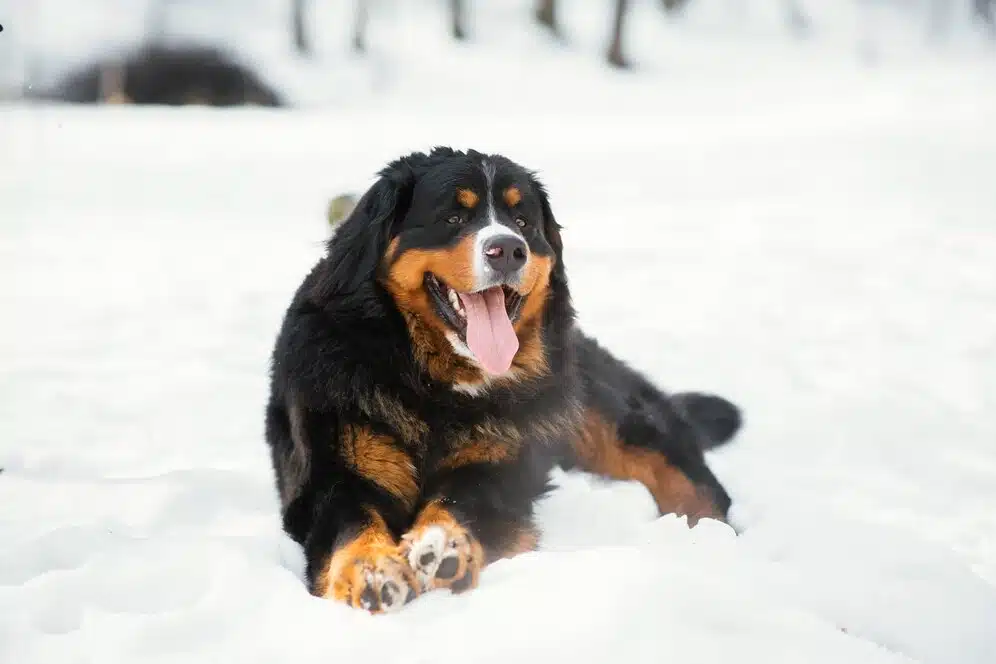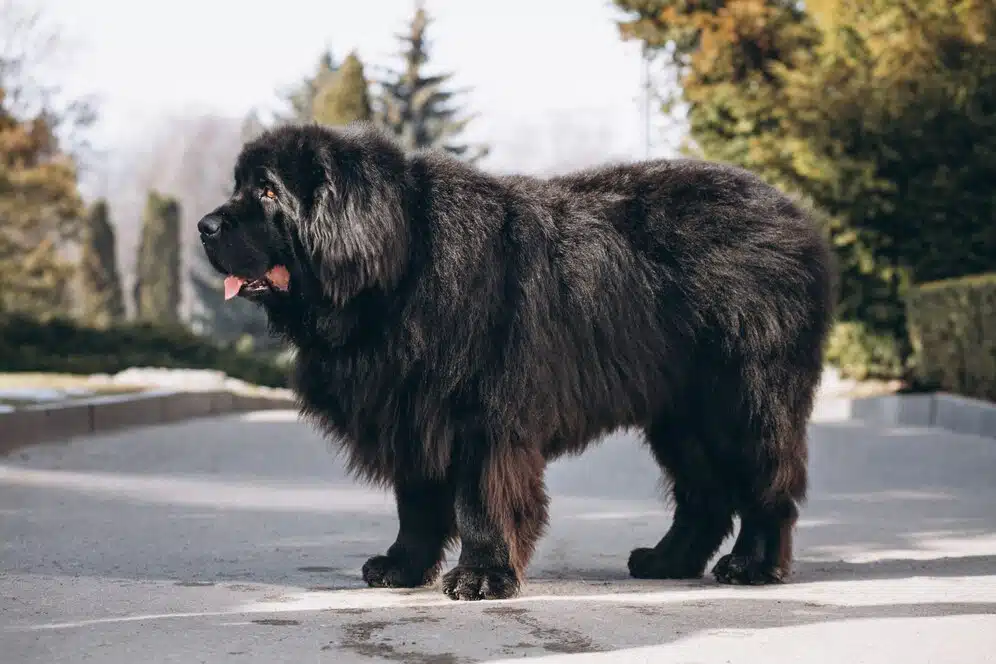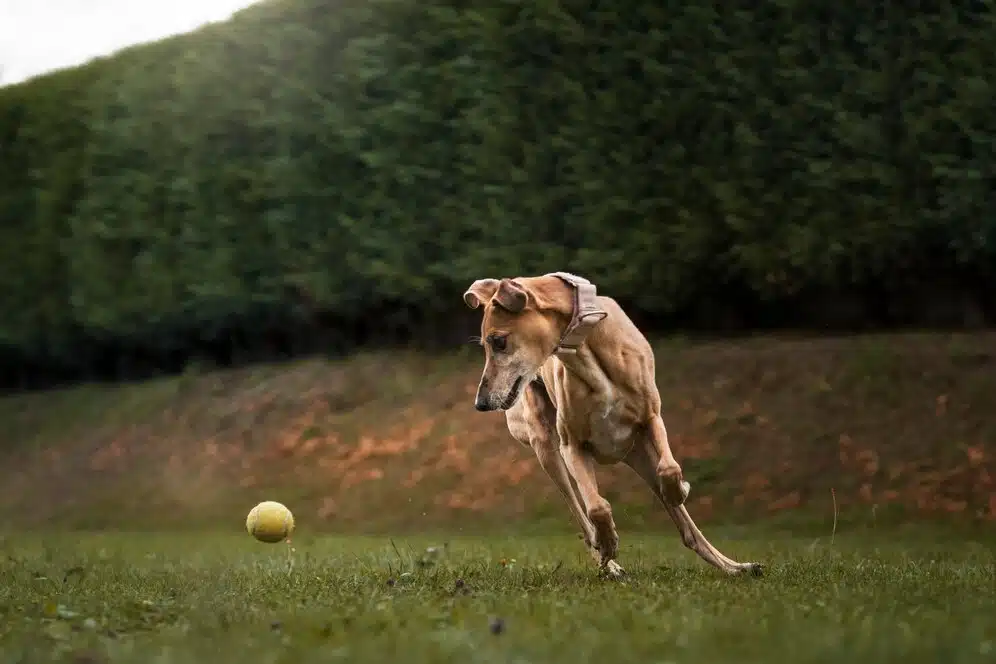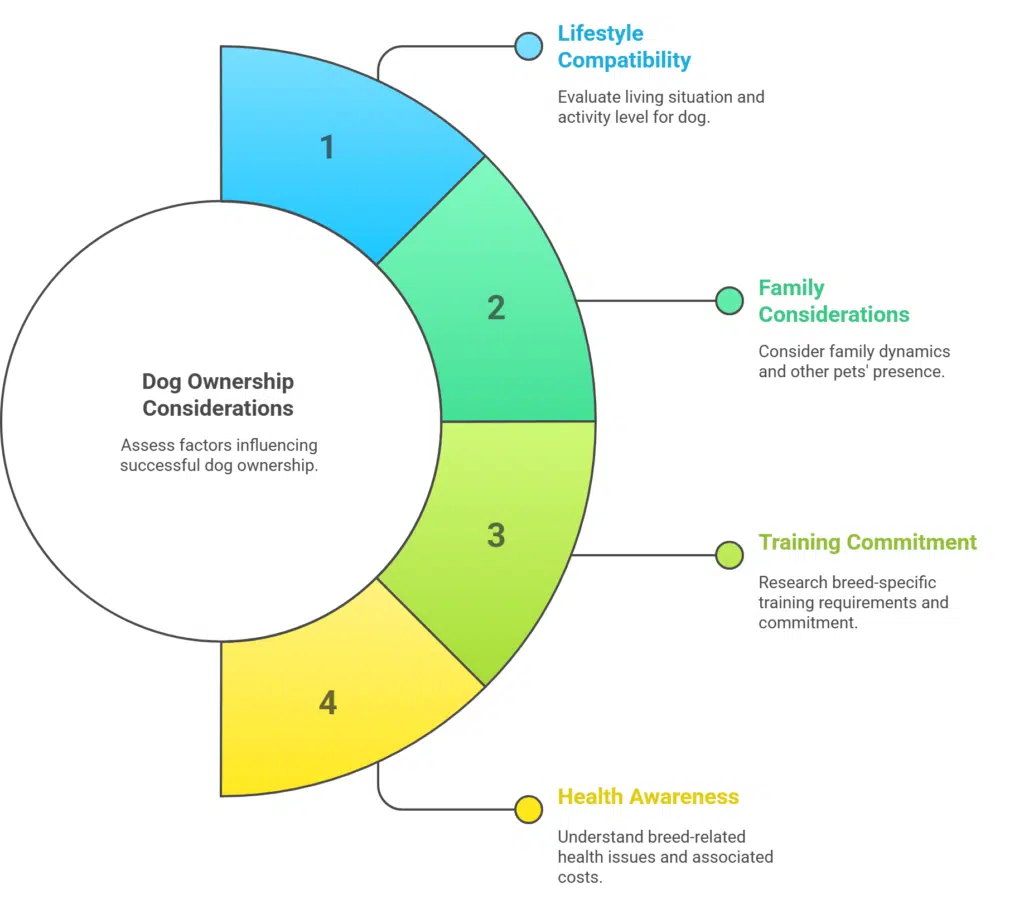Choosing the right dog breed can make a significant difference in creating a harmonious household. Dog aggression, characterized by hostile or threatening behavior towards humans or other animals, remains a crucial consideration for potential pet owners. This behavioral trait can manifest through growling, snapping, or biting, potentially leading to challenging situations in daily life.
Table of Contents
The good news? Many dog breeds naturally possess gentle, friendly temperaments that make them ideal companions for families, seniors, and first-time pet owners. These breeds have been carefully developed over generations to exhibit calm, sociable characteristics, reducing the likelihood of aggressive incidents.
In this comprehensive guide, we’ll explore 10 remarkable dog breeds celebrated for their peaceful dispositions. From the loving Golden Retriever to the laid-back Greyhound, these breeds demonstrate that canine companionship can be both rewarding and worry-free. Each featured breed brings unique qualities to the table while maintaining a gentle approach to human and animal interactions.
Note: While these breeds typically display non-aggressive tendencies, proper training, socialization, and responsible ownership remain essential for any dog’s behavioral development.
Understanding Dog Aggression
Dog aggression can show up in different ways, from subtle signs to clear acts of hostility. Here are some common behaviors to watch out for:
Growling and snarling
- Showing teeth or snapping
- Lunging or charging
- Biting or attempting to bite
- Excessive barking with aggressive body language
- Resource guarding (protecting food, toys, or space)
Factors That Contribute to Aggressive Behavior
Aggressive behavior in dogs is usually caused by a combination of several factors:
1. Genetic Predisposition
Some dog breeds have genetic traits that affect their temperament and behavior. Studies suggest that genetics play a role in about 20-30% of a dog’s behavior.
2. Environmental Influences
A dog’s environment and daily experiences can shape how they behave. Some environmental factors include:
- Limited socialization during important developmental stages
- Traumatic experiences or abuse
- Insufficient exercise and mental stimulation
- Inconsistent rules or boundaries
3. Training and Early Life Experiences
The quality and consistency of training have a significant impact on a dog’s behavior. Some training-related factors include:
- Inadequate socialization during puppyhood
- Negative reinforcement or punishment-based training methods
- Lack of basic obedience training
- Poor communication between the dog and owner
4. Medical Conditions
Certain health issues can lead to aggressive reactions in dogs. Some medical conditions that may contribute to aggression include:
- Pain or discomfort from injuries or illnesses
- Hormonal imbalances affecting mood and behavior
- Neurological conditions impacting impulse control
- Age-related cognitive decline causing confusion or anxiety
By understanding these underlying factors, we can better identify potential triggers for aggressive behavior in dogs. This knowledge allows us to address these triggers proactively before they escalate into more serious issues.
If you’re dealing with an aggressive dog or want to prevent such behaviors, seeking professional help from certified animal behaviorists can be beneficial. They have the expertise to assess your dog’s specific situation and provide tailored guidance on managing and preventing aggression effectively.
Criteria for Selecting Non-Aggressive Dog Breeds
Identifying non-aggressive dog breeds requires understanding specific behavioral traits and characteristics. These gentle companions display distinct qualities that set them apart:
Key Traits of Non-Aggressive Dogs:
- Natural sociability with humans and other animals
- Patient demeanor in various situations
- Adaptable personality
- High tolerance for handling and physical contact
- Minimal territorial behavior
- Reduced prey drive
A dog’s temperament plays a vital role in family dynamics, particularly in households with children or other pets. Non-aggressive breeds demonstrate:
- Gentle Play Style: These dogs naturally adjust their strength during playtime
- Stress Resilience: They handle unexpected situations without aggressive responses
- Clear Communication: They display obvious body language signals before feeling overwhelmed
- Social Intelligence: They read and respond appropriately to human and animal cues
Essential Considerations for Families:
- Age and energy levels of family members
- Living space and exercise requirements
- Previous experience with dogs
- Time available for training and socialization
- Presence of other pets
- Regular activities and lifestyle patterns
Selecting a non-aggressive breed requires matching these characteristics with your family’s specific needs and circumstances. A breed’s natural tendencies toward calmness and gentleness create a foundation for successful integration into family life.
1. Golden Retriever

Golden Retrievers are one of the most popular family dogs known for their intelligence and gentle nature. They consistently perform well in temperament tests, with an impressive pass rate of 85.6%, according to the American Temperament Test Society. This places them among the most stable and dependable breeds.
Why Golden Retrievers Excel in Therapy Work
Research published in the Journal of Veterinary Behavior reveals why Golden Retrievers are naturally suited for therapy work:
- They have a heightened ability to understand and respond to human emotions.
- They have a strong motivation to make their handlers happy.
- They show remarkable patience when interacting with children and elderly individuals.
The Gentle Legacy of Golden Retrievers
Golden Retrievers have a history that dates back to the 1800s in Scotland. They were specifically bred to retrieve waterfowl without causing any harm – a skill that requires a soft mouth and gentle handling. This breeding background is reflected in their gentle behavior today.
Golden Retrievers’ Versatility in Various Roles
A study conducted by the American Kennel Club in 2022 found that Golden Retrievers excel in several important roles:
- Service dogs assisting individuals with disabilities
- Search and rescue operations locating missing persons
- Child therapy programs helping children with emotional or behavioral challenges
- Hospital visitation programs bringing comfort to patients
These adaptable dogs remain calm and composed in different environments, making them perfect companions for both active families and individuals seeking emotional support animals.
2. Labrador Retriever

Labrador Retrievers are consistently ranked as America’s most beloved dog breed. They are known for their gentle nature and unwavering loyalty. These intelligent dogs have a natural ability to understand human emotions, making them exceptional companions for families with children of all ages.
Their Adaptable Nature Shines Through in Various Professional Roles:
- Search and Rescue Operations: Their powerful sense of smell and stamina make them invaluable in disaster zones.
- Guide Dogs: Exceptional spatial awareness and focus serve visually impaired individuals.
- Therapy Work: Natural empathy helps calm patients in hospitals and nursing homes.
- Drug Detection: Sharp scent discrimination abilities aid law enforcement.
A 2022 study by the American Veterinary Medical Association revealed that Labradors have one of the lowest bite rates among all dog breeds. Their patient demeanor allows them to handle the unpredictable behavior of young children, while their playful spirit keeps families active and engaged.
These versatile dogs thrive in both suburban and rural environments, requiring moderate exercise to stay happy. Their water-resistant double coat and natural swimming abilities make them perfect companions for active families who enjoy outdoor adventures.
3. Bernese Mountain Dog

The Bernese Mountain Dog is a perfect example of gentle strength, combining impressive size with a remarkably tender personality. These dogs from Switzerland usually weigh between 70-115 pounds, but their soft eyes and patient nature make them great family pets.
History and Heritage
Originally bred in the canton of Bern, Switzerland, these working dogs had various roles such as pulling carts, driving livestock, and guarding farms. Their historical job required a balanced temperament – strong enough for work yet gentle enough to handle livestock without causing harm. This background influences their modern personality, making them excellent guardians who protect through presence rather than aggression.
Temperament and Behavior
Bernese Mountain Dogs are known for their:
- Patience with children
- Gentle playfulness
- Calmness in different situations
- Natural protective instincts without being aggressive
These traits make them well-suited for family life.
Ideal Living Conditions
These dogs do best in homes where they receive regular attention and moderate exercise. They thrive in family environments where they can be involved in activities and spend quality time with their loved ones.
If you’re looking for a loyal and gentle companion who will always be by your side, the Bernese Mountain Dog might just be the perfect fit for you.
4. Newfoundland

Newfoundlands are a unique breed known for their combination of strength and gentleness. These large dogs, weighing up to 150 pounds, have a natural ability to perform water rescues due to their:
- Muscular build
- Waterproof double coat
- Webbed feet
- Innate swimming skills
Their intelligence is evident in how quickly they learn and their instinctive protective behavior. One remarkable instance took place in 2012 when a Newfoundland named Whizz rescued 9 individuals from drowning off the coast of England, earning him the PDSA Order of Merit.
These gentle giants are skilled in various areas:
- Water rescue operations
- Being loving companions to families
- Providing therapy services
- Supervising children
Instead of being aggressive, Newfoundlands show their protective nature through calm watchfulness. Typically, a Newfoundland will position themselves between perceived threats and their family members, using their size as a deterrent rather than displaying aggressive behavior.
Research indicates that Newfoundlands are among the breeds with the lowest bite incidents, making them excellent companions for homes with children or elderly individuals. Their patient demeanor and natural lifeguarding instincts have earned them the nickname “nanny dogs” in many communities.
5. Cavalier King Charles Spaniel

The Cavalier King Charles Spaniel is a breed that perfectly combines elegance and affection. These delightful dogs carry themselves with grace while also having a sweet and lovable nature.
Key Features of Cavalier King Charles Spaniels
- Soft, expressive eyes that radiate warmth
- Silky coat that requires moderate grooming
- Adaptable size ideal for apartments
- Natural ability to bond with all family members
Their calm temperament makes them exceptional therapy dogs, bringing comfort to hospitals and nursing homes. Research shows Cavaliers possess remarkably low territorial aggression, ranking among the most peaceful breeds in temperament tests.
Urban pet parents particularly appreciate these spaniels’ modest exercise needs – a daily walk and indoor playtime suffice. Their quiet nature means minimal barking, making them considerate neighbors in apartment settings.
The breed’s affectionate personality shines through their “love bug” reputation – these dogs genuinely enjoy cuddling and staying close to their human companions, creating deep emotional bonds that last a lifetime.
6. Pug

Pugs are lovable little dogs that can fit into any living situation. Despite their small size, they have big personalities and are loved by dog lovers all over the world.
Why Pugs Are So Popular
Pugs have a unique look with their wrinkled faces and snorting sounds, which often make people laugh. They have become internet sensations, especially on TikTok, where videos of Pugs doing funny things have millions of views.
Pugs’ Adaptability
One of the reasons why Pugs are so popular is because they can adapt to different living environments. Whether you live in an apartment, have a family, or live alone in a city or suburb, Pugs can thrive in these settings.
Pugs as Intuitive Companions
Recent research shows that Pugs are good at understanding human emotions, making them great companions. They love cuddling and relaxing, which is perfect for a laid-back lifestyle. However, they also have enough energy for short playtime and gentle exercise.
Pugs in Pop Culture
Pugs have made their way into pop culture too. They have appeared in commercials and movies, showcasing their charm and appeal. Doug the Pug, a famous Pug with millions of social media followers, is a prime example of how these dogs can be both beloved pets and social media stars.
7. Beagle

Beagles bring endless joy to family life with their cheerful personalities and gentle nature. These small hounds have an infectious enthusiasm that brightens any space, making them perfect companions for both children and adults.
1. Hunting Heritage and Exceptional Sense of Smell
Beagles come from a long line of hunting dogs in England, where they were skilled at tracking rabbits and other small game. This background gives them an incredible sense of smell, which is 40 times stronger than that of humans. Today, this keen nose helps them in various tasks such as finding hidden items at airports or detecting certain medical conditions.
2. Separation Anxiety and Need for Companionship
While Beagles are always happy, they can feel anxious when left alone for long periods. Being pack animals, they naturally seek companionship and may develop behavioral problems if they don’t receive enough attention.
Key Beagle traits:
- Gentle and patient with children
- Social butterflies who love meeting new people
- Excellent trackers with powerful noses
- Musical personalities expressing themselves through distinctive howls
- Food-motivated learners responding well to positive reinforcement
These cheerful hounds thrive in active households where their energy finds positive outlets through play, training, and scent work activities. Their adaptable nature makes them suitable for both suburban and urban living, provided they receive adequate exercise and mental stimulation.
8. Bichon Frise

The Bichon Frise is a charming companion known for its fluffy appearance and playful personality. Despite their small size, these dogs are full of energy and are highly adaptable to different living situations.
Why Bichon Frises Make Great Pets
According to research published in the Journal of Veterinary Behavior, Bichon Frises are highly social dogs with low aggression levels. This makes them well-suited for various types of households, including:
- First-time dog owners
- Apartment residents
- Families with children
- Senior citizens
Emotional Intelligence and Allergy-Friendly Coat
A study conducted by the American Kennel Club in 2022 found that Bichon Frises possess strong emotional intelligence, with 92% of them responding positively to human facial expressions. Additionally, their hypoallergenic coat makes them an attractive choice for households with allergies.
Living Environment and Exercise Needs
Bichon Frises can thrive in both urban and suburban areas, requiring moderate exercise through daily walks and playtime activities. Their friendly nature also extends to other pets, making them suitable for multi-pet households.
Therapy Potential
The cheerful disposition and quick learning abilities of Bichon Frises make them excellent candidates for therapy work. Many of these dogs have been successfully trained to provide comfort and support in hospitals and nursing homes.
9. Whippet

Whippets are an interesting breed of dog. They are known for their speed and athleticism, being able to run up to 35 mph on the racetrack. However, when they are at home, they become calm and relaxed companions. This contrast in behavior has earned them the nickname “the 40-mph couch potato.”
Ideal for Apartment Living
According to research from the American Kennel Club, Whippets are well-suited for apartment living. They are gentle dogs that don’t require much space indoors, making them perfect for people who live in cities. Surprisingly, their exercise needs are not as high as one might expect – a daily walk or run for about 30 minutes is enough to keep them physically satisfied.
Relaxed Nature
A study published in the Journal of Veterinary Behavior in 2022 found that Whippets spend an average of 18 hours a day resting. This indicates that they have lower anxiety levels compared to other sighthound breeds. Their calm behavior also extends to interactions with children and other pets, where they show patience and gentleness.
Key Traits of Whippets
Whippets possess several key traits that make them great companions:
- They rarely bark
- They don’t require much grooming
- They have a natural instinct to keep themselves clean
- They form strong bonds with their family members
- They have good manners indoors
10. Greyhound

Greyhounds challenge the common misconception of being high-strung athletes. These elegant dogs display a surprisingly laid-back temperament, earning them the nickname “40-mph couch potatoes.” Research shows Greyhounds spend up to 18 hours a day sleeping, making them ideal companions for apartment living.
Their gentle nature extends to interactions with children and other pets. A study by the American Temperament Test Society reveals Greyhounds score an impressive 88.6% on temperament tests, surpassing many popular family breeds.
Retired racing Greyhounds represent a unique adoption opportunity. Organizations like Greyhound Pets of America and The Greyhound Project work tirelessly to place these gentle athletes in loving homes. These programs report successful adoption rates, with 95% of retired racers adapting seamlessly to family life.
Key traits of retired Greyhounds:
- Low indoor energy levels
- Minimal barking tendencies
- Natural affinity for human companionship
- Adaptable to various living situations
The racing industry’s decline has increased the availability of these calm, dignified dogs for adoption, offering families the chance to experience their uniquely gentle disposition.
Choosing the Right Dog Breed for You
Selecting a non-aggressive dog breed is the first step towards a fulfilling experience with your new pet. The breeds mentioned in this guide are known for their friendly nature, making them great companions for different lifestyles. Here are some important factors to keep in mind:

- Lifestyle Compatibility: Evaluate your living situation, level of physical activity, and how much time you can dedicate to a dog
- Family Considerations: Think about whether you have children, elderly family members, or other pets in your household
- Training Commitment: Look into the specific training needs of the breed you’re interested in
- Health Awareness: Be aware of any potential health issues that may arise with the breed and the costs involved
Among these gentle breeds lies your ideal match. Take the time to interact with various dogs, talk to trusted breeders, and explore local animal shelters. Making an informed choice will pave the way for a loving bond with your new furry companion.
FAQs (Frequently Asked Questions)
What are the least aggressive dog breeds?
The least aggressive dog breeds include Golden Retrievers, Labrador Retrievers, Bernese Mountain Dogs, Newfoundlands, Cavalier King Charles Spaniels, Pugs, Beagles, Bichon Frises, Whippets, and Greyhounds. These breeds are known for their calm and friendly temperaments.
What factors influence dog aggression?
Dog aggression can be influenced by various factors including genetics, environment, and training experiences. Understanding these factors is crucial when selecting a breed that is less likely to exhibit aggressive behavior.
How can I choose a non-aggressive dog breed for my family?
When selecting a non-aggressive dog breed for your family, consider traits such as gentleness and calmness. It’s important to choose a breed with a temperament that is suitable for families with children or other pets.
Are Golden Retrievers good family dogs?
Yes, Golden Retrievers are considered one of the best family dogs due to their friendly nature and intelligence. They have been historically significant as therapy and service dogs and are known for their calm demeanor.
What makes Labradors popular as family pets?
Labrador Retrievers are popular as family pets because of their playful yet gentle disposition. Their versatility allows them to serve in various roles such as assistance dogs and search-and-rescue partners.
Can Whippets live comfortably in apartments?
Yes, Whippets can thrive in apartment settings due to their moderate exercise needs. They are known to be both fast runners outdoors and calm couch potatoes at home.

